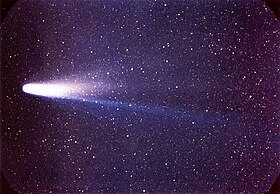The seven member crew of the space shuttle Challenger walk confidently towards their space vessel unaware of their fate as they sought to enter the final frontier. The astronauts were Michael J. Smith, Francis R. (Dick) Scobee, Ronald E. McNair, Ellison S. Onizuka, Sharon Christa McAuliffe, Gregory Jarvis and Judith A. Resnik.
It was a national tragedy. It was witnessed on live broadcast television. Millions were saddened and dumbfounded by what they saw.
Thirty five years ago on January 28, 1986, the United States space shuttle Challenger (STS-51-L) was launched on a mission from Kennedy Space Center in Cape Canaveral, Florida. The purpose of the mission was to deploy a satellite to study the approaching Halley’s Comet (the comet last appeared in our solar system in1986) and to inaugurate the Teacher in Space Project.
I was a witness, as were many others, via a live televised broadcast of the event as it played out from pre-launch, liftoff and sudden destruction in mid-air.

A color image of comet Halley, shown flying to the left aligned flat against the sky. Photo courtesy NASA Space Gallery.
The Challenger would make ten missions, nine successful before exploding in mid-air on its final, and 10th launch. That mission resulted in the deaths of all seven crew members. The crew members were publicly announced one year prior to liftoff. The crew included Lt. Col. Francis R. (Dick) Scobee who served as Commander, with Michael J. Smith as the pilot, three mission specialists Ellison S. Onizuka, Judith A. Resnik, Gregory Jarvis, Ronald E. McNair, and the civilian celebrity from Concord, New Hampshire, school teacher Sharon Christa McAuliffe.
McAuliffe had been selected from among 11,000 teacher applicants with the NASA Teacher in Space Project in addition to qualifying for the privilege of flying. She was scheduled to become the first teacher in space.
Challenger on liftoff 1983.
According to a transcript released by NASA in 1986, the astronauts suspected something was wrong when they lifted off from the launch pad. The voice activated flight intercom captured Pilot Michael J. Smith uttering the final words by any of the astronauts when he said ”uh oh,” 73 seconds after launching. The rest of their story played out in front of a world audience on world wide broadcast television.
Explosion
Due to the tremendous amount of fuel the Challenger carried, when an “O” ring failed it collapsed the fuel tank. This resulted in a massive explosion encompassing the entire craft in a fire ball which caused the ship to self-destruct. The Challenger reached an altitude of 9 miles over the Atlantic before crashing into the water. It was reported that the Challenger crew “remained conscious” approximately 10 seconds following the explosion and switched on at least three emergency breathing packs before succumbing to the high altitude and loss of pressure and oxygen in the crew cabin. It was speculated that the crew could have survived until they crashed into the ocean. Estimated impact was an unsurvivable 207 mph.
Three of four air packs recovered on the ocean floor were activated and were 3/4 to 7/8 empty. The air packs held 5 minutes worth of air. If anyone could have survived the loss of air, they certainly did not on impact almost three minutes after the explosion.
Eye Witness Account
As a university student at the time this writer happened to be in the office of the Dean of my college the morning of the disaster. Secretaries and a few students like myself were in the office taking care of business and occasionally watching the television screen until liftoff when everyone turned their attention to the Challenger shuttle and short flight.
Everything looked good for a brief few moments as the Challenger lifted off and there was pilot chatter detailing the inflight data. The ship started to show smoke coming from between the staged rockets of the vessel and then suddenly the closeup view exploded and the camera angle changed to reflect that the craft was covering the sky with smoke and plumage everywhere. The Challenger rockets appeared to be going in two different directions. As a student I was trying to decipher exactly what I was seeing before it registered that the craft had exploded. About the same time at least two of the women in the office screamed and one was crying saying “turn it off”. Most of us in the room insisted that the broadcast stay turned on to see and hear what was being reported.
Final Flight
After the Challenger disaster, schools, streets, parks, fields, municipal buildings and other public facilities in the U.S. were renamed in honor of the astronauts and crew of the Challenger. In addition various books, movies and programs of fiction and non-fiction have featured the names of the Challenger astronauts.
Scobee was posthumously inducted into the Astronaut Hall of Fame. Schools and scholarships were named in honor of McAuliffe. Ronald McNair Boulevard in Myrtle Beach, South Carolina, was named to commemorate McNair, along with Scobee Road, Christa McAuliffe Street and attributes to the other astronauts.
South Carolina native McNair may have been the most commemorated astronaut having a SC library, a moon crater, songs, and various other recognitions to memorialize him.
In 1986 the Challenger Center for Space Science Education was founded by the families of the Challenger astronauts in their memory. The center is a non-profit organization headquartered in Washington, DC.
All the Challenger astronauts and crew (along with the Columbia astronauts and crew) were posthumously awarded the Congressional Space Medal of Honor in 2004.
President John F. Kennedy said that space is the “New Frontier” in his 1960 Democratic National Convention acceptance speech, and that America was going to conquer it. Brave men and women who enter the space program have all eyes on them as we each look with anticipation at what that Final frontier looks like up close.




 RSS - Posts
RSS - Posts